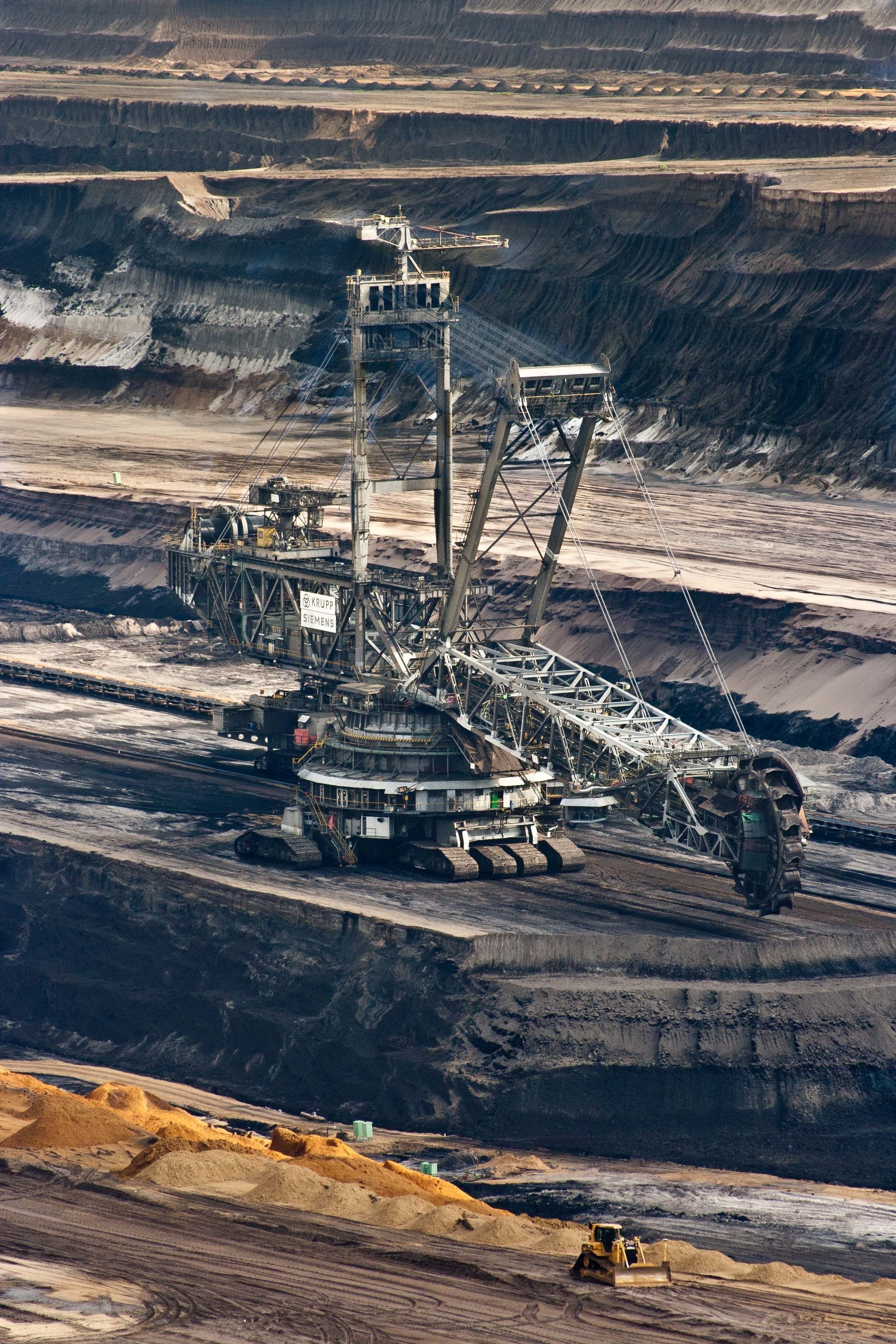How to Combine Digital Technology and the Environment
What is digital technology?
Digital technology encompasses both information and communication sciences and technologies, as well as electronics. It is present in our daily lives and can help improve living and working conditions, as well as entertainment. For example, during the COVID-19 pandemic, digital technology allowed a significant portion of the population to continue working and children to pursue their studies remotely.
However, it is important to remain vigilant because the production, use, and end-of-life of digital goods and services can have negative impacts on the environment and human health.
The environmental challenges related to digital technology
RAW MATERIAL: RARE METALS
The limitations of digital technology begin with the supply chain.
The materials needed to manufacture digital equipment are found only in specific countries, and the ratios vary significantly across these areas. From one operation to another, the environmental consequences differ, and the natural resources required, such as minerals for their production, are depleting rapidly. Exploitation mines are primarily located in Asia and Africa."
The work of Dillon
In the Palabora Mine, the very first commercial mine in South Africa, over 4.1 million tons of copper have been extracted since 1852. It represents the largest artificial hole in the world, with a diameter of 2,000 meters and a depth of 762 meters (equivalent to two and a half Eiffel Towers).
Focus on Cobalt: A Social Issue
Cobalt is one of the primary metals found in our smartphone, computer, and electric car batteries. It is predominantly sourced from the Democratic Republic of Congo, which is the world's leading exporter of this metal. Industrial mines located in the southern part of the country account for only 20% of mining jobs but contribute to 80% of its production.
This is achieved through the harsh labor of 250,000 Congolese, including 40,000 children (as per UNICEF figures from 2014, projected to increase by 11 times by 2025). The mining process starts as early as the age of 3, involving intense manual labor without proper protective gear or regular days off.
There are several types of mines, including open-pit and underground mines. Over time, tunnels have expanded and now run beneath inhabited areas, leading to collapses. Fatal accidents, congenital deformities, respiratory diseases, and more are caused by the quest for cobalt.
Through these figures, we understand that the extraction and exploitation of cobalt mines pose significant social and environmental issues. However, this situation is just one example among many, especially considering that the design of a smartphone involves more than 70 materials, including around sixty different metals.
The extraction, production, and recycling (the latter part is often complex due to the very small sizes of materials) cause numerous human rights violations, including breaches of the 8 fundamental conventions of the International Labour Organization.
WATER RESSOURCES
At the same time, digital technology raises significant concerns regarding the high water consumption throughout the life cycle of products in this sector.
In a few figures, in 2019, the environmental impact of digital technology for one year was equivalent to:
Globally: 242 billion packs of mineral water (9 liters each).
In France: 5 times the water consumption of all residents of Paris.
Individually: 9,700 liters of freshwater, with an average of 11 digital devices per user in France.
This freshwater is primarily consumed in the extraction phase of the materials needed for hardware manufacturing. Indeed, the extraction and refining of metals require a significant amount of water, which is an essential resource for mining. This water is not only consumed but its quality is also degraded once used.
Moreover, the water consumption of mining operations creates competition with other uses, such as the daily needs of local populations and agriculture. This competition between different uses can lead to significant tensions, especially in regions where water stress is already present, as is the case for many deposits.
GREENHOUSE GAS EMISSIONS
In 2021, greenhouse gas emissions related to digital technology equaled the same amount emitted by all the world's trucks. To be more precise, emissions from the digital sector are approximately 2 gigatons of CO2 equivalent per year, accounting for 3 to 4% of global greenhouse gas emissions.
It is important to note that the manufacturing of digital tools is highly carbon-intensive. This includes material extraction and the use of electricity from coal-fired power plants in Asian countries to power the machines for mineral extraction and processing.
In France, more than half of electricity production is decarbonized through nuclear power and renewable energies. Therefore, the portion of the impact on climate change related to usage is lower than that linked to the production of the tool.
Should we continue this overexploitation of natural resources despite the major environmental and human risks? There is a solution to this, and that is responsible digital technology.
What is Responsible Digital Technology?
Responsible digital technology is an ongoing effort to enhance the social and environmental impact of digital technologies. It involves a set of best practices aimed at encouraging an ethical and positive use of emerging technologies.
Best Practices to Minimize Your Digital Footprint
Conserving Energy: Digital devices consume energy, so it's important to turn them off when not in use. You can also opt for energy-efficient devices and plug them into a power strip with a switch to prevent standby devices from consuming unnecessary energy.
Reducing Electronic Waste: Digital devices are often discarded when they become obsolete, leading to waste management issues. To minimize electronic waste, consider purchasing durable and quality devices, and either reuse or donate them to organizations when no longer needed.
FACTS:
- There are between 54 and 113 million 'sleeping' phones, with over two-thirds still functional (2018 data).
- Two-thirds of these sleeping phones are reportedly still functional.
- Having one backup phone per household should be sufficient.
- Ecological Backpack of a Smartphone:
- A smartphone weighs between 100 and 300 grams, compared to 70 kilos of materials!
- Other connected devices are likely in a similar situation.
Use Open Source and Open Data Tools: The main objective of open source is to make all documents and information freely accessible to everyone, allowing data reuse without restrictions and avoiding duplications. Open source enables developers to optimize their research and understand how software is developed, allowing them to analyze its environmental impact. With this knowledge, they can determine whether the software is designed for collaborative use. Open source significantly reduces storage space and energy consumption. As a professional, we recommend using shared tools. As mentioned earlier, this allows multiple users to utilize the same software, such as GeoNature, for example.
Working or Using Digital Technology Responsibly (Green IT)
- Clean up your email inbox.
- Unsubscribe from newsletters you don't read.
- Réduisez la taille des pièces jointes
By using digital technology responsibly, we contribute to a sustainable and ethical digital world.
How to Reduce Digital Waste
Buy Quality and Durable Devices: High-quality devices tend to last longer and have a better lifespan than cheap alternatives. When purchasing a new device, take the time to read reviews and comparisons to ensure you are buying a quality product.
Buy Used Devices: Many websites and stores now offer electronics in excellent condition as used items.
Repair Damaged Devices: Instead of discarding a non-functional device, try repairing it. You can often find online tutorials for fixing simple issues yourself, or you can take the device to an authorized repair shop.
Give Away or Sell Unused Devices: If you have devices that you no longer use, consider giving them away or selling them to someone in need. You can donate the device to a charity, sell it on an online marketplace, or give it to a friend or family member.
Recycle End-of-Life Devices: When a device is beyond repair or reuse, it's crucial to recycle it responsibly. You can take the device to an authorized recycling center or return it to a retailer that handles recycling.
By following these tips, you can contribute to reducing electronic waste and preserving natural resources.
How do we incorporate responsible digital practices into our daily operations at Natural Solutions?
We ask our employees to turn off their video cameras during video conferences when not needed, reducing energy consumption and CO2 production associated with video usage.
We also encourage our employees to be mindful of file storage on Teams, limiting storage use and reducing associated energy consumption for backups.
We encourage our employees to reduce email usage, favoring instant communication tools like Teams.
Maximizing the lifespan of our equipment:
- We utilize rental equipment.
- If a device no longer suits our needs, it is refurbished and made available to other companies.
- We've opted for 'box' computers to reuse screens and accessories, changing only the box when performance limits are reached or the hardware fails.
IT for Green and Green IT:
- IT for Green' is the practice of using digital technology to reduce environmental impact, with a focus on ecology and biodiversity.
- Green IT: We aim to use digital tools that are as environmentally friendly as possible.
- Tool Sharing through Open Source and Open Data:
Open Source:
- Open-source software is based on principles such as free redistribution, accessible source code or firmware, and usability in all domains. Key benefits include development cost savings through code reuse, feedback from users leading to continuous improvement, and sustainable code development over time.
- Open Data: Making data freely accessible saves time, energy, and resources.
Optimizing Hosting Solutions:
- We favor shared hosting for our clients to share allocated resources and make the most of machine capabilities without overconsumption or over-sizing.
- Our teams seek green hosts powered by renewable energy.
Are you looking to deepen your knowledge in terms of responsible digital technology?
There are team workshops that allow participants to question and understand the impacts of digital technology on the environment. It's called the 'Digital Fresco'!
Similar to the Climate Fresk, the Digital Collage brings people together for half a day to develop fun and collaborative workshops. The goal is to raise awareness and inform participants about the environmental challenges associated with digital technology.
At Natural Solutions, our colleague Madaline Letetsu is a facilitator for the Digital Collage, in addition to being our Life Cycle Analysis and Eco-design Manager. She organizes internal serious games to push us further into the world of regenerative practices.
If you are interested, Digital Collage workshops are regularly organized in our premises for the general public, thanks to the opening of an Open Lande Marseille branch.
If you'd like to stay informed or learn more about using digital technology responsibly,
contact us.
















